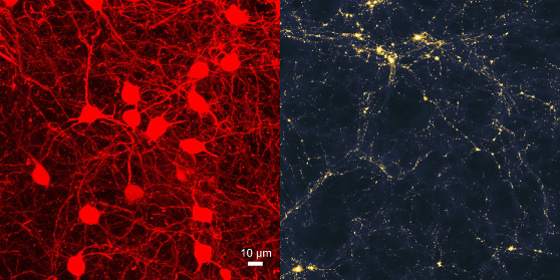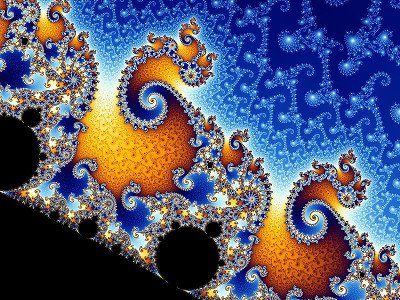Introduction To Hermeticism — The Kybalion
Our intent is not to erect a new Temple of Knowledge, but rather to place in the hands of the student a Master-Key with which he may open the many inner doors in the Temple of Mystery through the main portals he has already entered.
- The Kybalion

The Kybalion is a text that a friend recommended to me some years ago. It was written under the pseudonym The Three Initiates and published in 1908. The text aims to explain essential teachings of hermeticism by Hermes Trismegistus about the nature of the universe and beyond. This is an introduction.
I was a bit put off by the style of writing when I started reading The Kybalion. Still, I proceeded with an open mind. It turned out to be quite an interesting read.
The text explains seven principles that describe the nature of everything there is, the All. Nothing exists outside the All, it IS simply everything there is, was, and ever will be.
In order to offer you some context to the principles and how they connect with each other, I will describe some associations that I find relevant. Please note that I do not seek to prove the validity of the principles or try to convince in any way. It is a philosophical view that I enjoy and the associations are ones that resonate with me.
1. The Principle of Mind
THE ALL is MIND; The Universe is Mental.
- The Kybalion
The first principle states that All is mind. Everything we can possibly experience within and around us (both material and immaterial) is mind and therefore the expression of mind. Out of the seven principles, this one probably requires the biggest leap of faith.

By Ken Crawford – CC BY-SA 3.0
Looking to physics, we may be able to “soften” our idea of the material world to the level of what we can imagine by ‘thought’ or ‘mind’. I’m talking about the quantum level, which lies at the basis of everything that we perceive as matter. Dimension-wise, atoms consists mainly of open space, which make them seem much more “spacious” than the solid materials we perceive with our senses.
Studies show that on a quantum level, the characteristics of particles can change by the mere act of measuring their behaviour. Not everyone attributes this change to the consciousness or expectation of the person measuring though. It is still a mystery within science today.
What the Global Consciousness Project has been doing since 1998 is interesting. The project researchers measure fluctuations in data, produced by world-wide strategically placed random number generators by the process of quantum tunnelling. During large scale events where many people are in a comparable state of mind (think about 9/11, Obama’s election, the funeral of princess Diana or World Peace Day), the random number generators produce a deviation in the data compared to the general baseline. Data analysis across several events seem to indicate that our collective attention brings about these changes. Watch this talk from Roger Nelson in order to get a good understanding.
2. The Principle of Correspondence
As above, so below; as below, so above.
- The Kybalion
The second principle states that there is correspondence between laws and occurrences of the varies planes of being and life.
This can best be viewed as the similarity between big and small events across physical, mental and spiritual planes of existence. They can seem far-fetched at first, but you might start seeing these similarities everywhere if you’re open-minded and philosophical about the possibility.
For example, similarities between brain neurons and light distribution across the universe, or the light distribution across a country at night.

Left: Neuron, by Bruttokolliko – Own work, CC BY-SA 4.0
Right: Universe light distribution, by UCL Mathematical and Physical Science’s photostream
Another is the behaviour of an organization, country or the world in comparison to the behaviour of a single human being. Or the way in which cells in our body contribute to the whole human organism and how humans, plants and animals contribute to the earthly body.
Similarities between the spread of cancer through the body and the spread of capitalism throughout the world are another example. Both feed off their host (the body and the planet) in an unhealthy way of expansion. On the surface, this expansion seems to be without purpose. Both are ultimately self-destructive if not counteracted; both capitalism and cancer die if the host dies. In a visual sense, the spreading looks very similar too.
Fractals are an interesting subject that ties in with this principle. They are mathematical sets that exhibit repeating patterns to be seen at every scale. They are found throughout nature on all levels. The documentary “Fractals – Hunting The Hidden Dimension” offers a good overview.

By Wolfgang Beyer, CC BY-SA 3.0
3. The Principle of Vibration
Nothing rests; everything moves; everything vibrates.
- The Kybalion
The principle of vibration states that everything vibrates. This is the case on all levels of existence; big and small events on the physical, mental and spiritual planes.
String theory, which attempts to model the basic “substance” of the universe, talks about strings. These “strings” vibrate in multiple dimensions. Depending on how they vibrate, they might be seen in three-dimensional space as matter, light or gravity. It is the vibration of the string which determines whether it appears to be matter or energy, and every form of matter or energy is the result of the vibration of strings. Keep in mind though that there is no proof of string theory; it’s elegant mathematics.
This principle states that All is vibration, so it would have to be everywhere in- and around you.
What we perceive as sound, is vibrating air. Our ear drums vibrate with the frequency of the air vibration where it is translated into electrical signals for the brain. The brain then produces the experience of sound. These electrical signals themselves are a vibrating current. Light vibrates at frequencies, for which the speed of this vibration as it is received by our eyes and translated into electrical signals, defines our perception of colour. Smell is perceived by molecular vibrations, translated by the receptors in your nose into electrical signals for the brain. The electrical static of your skin is a vibrating current. When you’re cold, your body can get into a shaky vibration. The world itself emits electromagnetic vibrations that you can hear converted into humanly audible sound in a recording from NASA.
These are some nice direct examples. But the principle can be seen in other ways too when you stretch and compress time. Let’s say you extract a deep low tone from a song a couple of seconds long, then stretch it up to an hour and play the result; you would hear something that resembles a drumbeat. The other way around, after recording a drumming session and you speed it up, at some point it will sound like a continuous low tone. The idea is that if a low tone is vibration, a drumbeat is too, only the frequency is different.
From the extreme density of the highest possible vibration (such as the strings in string theory) down to low-pitch movements such as the earth revolving around the sun, the moon around the earth or the tides coming in and going out; all movement is vibration. See how this principle relates to the principle of correspondence (as above, so below)?
4. The Principle of Polarity
Everything is Dual; everything has poles; everything has its pair of opposites; like and unlike are the same; opposites are identical in nature, but different in degree; extremes meet; all truths are but half-truths; all paradoxes may be reconciled.
- The Kybalion
The principle of polarity states there are two poles to everything. Opposites are poles of the same vibration.
Sound is compressed and stretched air in a certain frequency by a source. The polarity is between air being compressed and stretched.
On a mental and feeling level, our mood changes between the poles of happiness and depression, compassion and hate, control and release, hope and despair, etc.
In the same way the waves come in and go out, there’s day and night, positive and negative, yin and yang, black and white, high and low, north pole and south pole, rude and polite, hard and soft, warm and cold.

Foucault’s Pendulum by Sylvar
5. The Principle of Rhythm
Everything flows, out and in; everything has its tides; all things rise and fall; the pendulum-swing manifests in everything; the measure of the swing to the right is the measure of the swing to the left; rhythm compensates.
- The Kybalion
The principle of rhythm tells that there is a rhythm to every movement. Frequency and rhythm are the same. Drumming has rhythm, just as a low tone in a song has rhythm. In this case the rhythm (frequency against time) defines whether we perceive a drumbeat or a continuous tone. This specific rhythm is a pendulum-like movement between the poles of compressed air / stretched air (sound is a pressure-wave).
Like the rhythm of a drum largely defines your experience of a piece of drumming by an artist, the rhythm (frequency) of light defines what colour you perceive. The difference is that the first is more subject to personal taste.
The rhythm of life changes with the rhythm of the seasons. In winter the days are shorter than in summer and it often gets colder. I find my mood changes with the seasons and the rhythm of feelings and emotions change with it too.
It also applies to life themes that are a cycle with a certain rhythm, of both nice and unpleasant occurrences. Think about the woman who always gets into relationships with abusive men, or someone who can never keep a job longer than a few months, or health issues that keep coming back and relationships that always end with the same basic reasons.

By NetKismet – Own work, CC BY-SA 3.0
6. The Principle of Cause and Effect
Every Cause has its Effect; every Effect has its Cause; everything happens according to Law; Chance is but a name for Law not recognized; there are many planes of causation, but nothing escapes the Law.
- The Kybalion
The principle of cause and effect states that every effect has cause and every cause has effect. This is pretty straight forward, however it also tells that there exists no such thing as chance. Chance is a mental label for a cause that has not been recognized or perceived.
If you don’t believe in chance, you see life events in a different way. Why did I get sick? Why did I lose my job? Why did that interesting opportunity come knock on my door? Why did I meet this and that person? Why did I feel so hurt by this person’s remark? These are questions you ask yourself more if you don’t believe in chance.
7. The Principle of Gender
Gender is in everything; everything has its Masculine and Feminine Principles; Gender manifests on all planes.
- The Kybalion
The principle of gender means to create, produce, generate. Everything and everyone contains the feminine and masculine element. Our most well-known manifestation of this principle on the physical level is sex. The negative pole (principle of polarity) is feminine, the positive pole is masculine. This has nothing to do with negativity or positivity. It means the principle of polarity is also apparent within the principle of gender and linked to their characteristics.
The tendency of the feminine principle is receiving, passive, occupied with creating new concepts, ideas and work of the imagination. The masculine principle tends to be more about material expression and willpower. The feminine characteristics cannot come to fruition without masculine willpower. In the same way the masculine cannot bring forth anything of value without feminine characteristics.
The principle is like a yin yang circle in everyone and everything. In a healthy, creative and caring person the two principles work together in harmony. According to The Kybalion, the conscious mind is masculine, the subconscious is feminine.
In Closing
These principles are an interconnected whole of continuous movement. They are both the framework and substance.
Seeing the principles at work around and within myself has increased my level of understanding of nature and made me more introspective. Reading The Kybalion the first time reinvigorated my interest in spirituality at the time, which has led me to a whole range of meaningful life experiences that followed.
I hope you enjoyed reading this introduction as much as I enjoyed writing it. If so, please make sure to read the original text. Take care.

Hi. I have read and reread. notice! that the great weakness that I have in relation to the principles is that applying them in everyday life has been difficult for me.
The laws are verifiable, as well as my reaction in different situations.
I repeat, my failure in the non-applicability in my daily routine
Downvoting a post can decrease pending rewards and make it less visible. Common reasons:
Submit
Hi, thank you for your comment!
I agree the challenge is in applying the principles and that is the personal path for everyone is different.
For me one part is to recognize patterns I've learned from the past that allow me to anticipate to them in the future. If your reaction in different situations is verifiable afterwards, then maybe you can find the key to change your reaction before you react by recognizing the situation next time. Your reactions might be caused by a broad range of circumstances (mental, physical, environmental). If now you´re conscious of the principles afterwards, then the alchemical part is to influence yourself on different levels in order to become conscious beforehand.
Best wishes!
Downvoting a post can decrease pending rewards and make it less visible. Common reasons:
Submit
Hi! I am a robot. I just upvoted you! I found similar content that readers might be interested in:
https://medium.com/nothing-equals-everything/introduction-to-hermeticism-the-kybalion-67d4ba6109f3
Downvoting a post can decrease pending rewards and make it less visible. Common reasons:
Submit